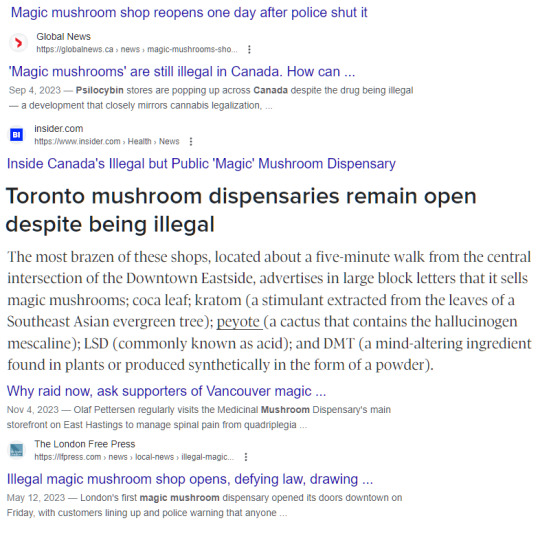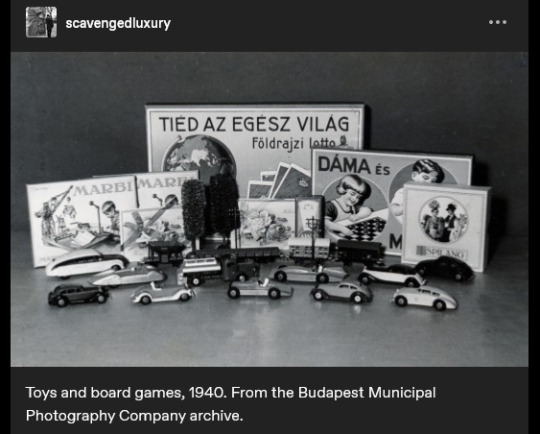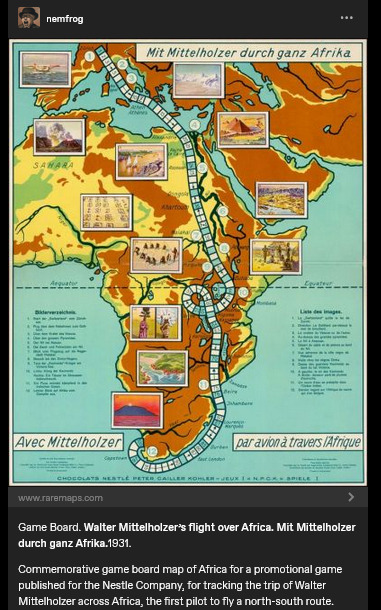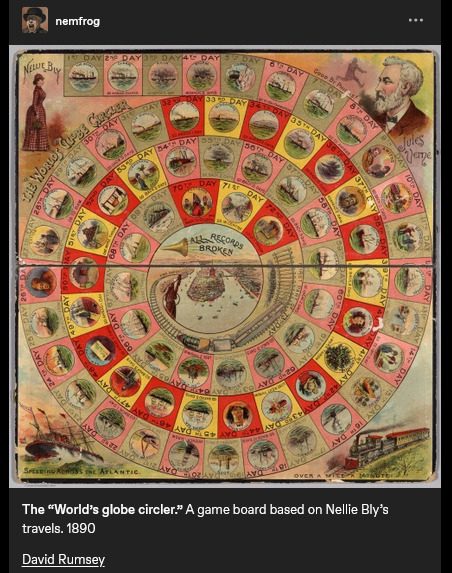#open-access articles
Explore tagged Tumblr posts
Text
Google Scholar क्या है | What is Google Scholar in Hindi
Google Scholar आज के डिजिटल युग में शोधकर्ताओं और छात्रों के लिए एक अत्यंत महत्वपूर्ण उपकरण बन गया है। यह scholarly literature के लिए एक विशेष सर्च इंजन है जो शोध पत्र, theses, किताबें, patents, court opinions, और अन्य शैक्षणिक सामग्री को ढूंढने में मदद करता है। चाहे आप किसी शोध प्रबंध पर काम कर रहे हों या नवीनतम अकादमिक लेख की तलाश में हों, गूगल स्कॉलर आपकी scholarly journey को सरल और प्रभावी…
#academic journals#academic profile#academic research#academic search engine#academic writing#advanced search#citation tracking#citations#Google Scholar#literature review#open-access articles#peer-reviewed journals#research alerts#research database#research impact#research papers#scholarly articles#scholarly content#scholarly literature#thesis search
0 notes
Text
one of the funniest news things in canada that always tickles me is the ongoing war between magic mushroom shops and the police.




this is the absolute height of humour to me right now
#tw drugs#lovingly cracking open a news paper just for the articles about dispensaries trolling the police#making drugs illegal has literally never ONCE in history worked#decriminalize it so we can stop overpaying useless cops to go on raids#offer SAFE AND CLEAN GOVERNMENT INSPECTED drugs like how we do with weed#stop the street drug deaths. tax them towards healthcare and social services and fucking UBI already#have the harder drugs harder to access along with on site support. no one WANTS to be stuck on meth#but ruining their lives in prison has helped approximately no one#jj stuff
1K notes
·
View notes
Text
Found something interesting for Pride and Prejudice fans relating to Elizabeth's takedown of Mr Darcy's perception of himself a gentleman.
I'm reading Thomas Fuller's 'The Holy State, and the Profane State' (published 1642 but this version republished in 1841 so the views were clearly still applicable) for a research essay, and in the chapter labelled 'The True Gentleman' he states:
He is courteous and affable to his neighbours … the truly generous are most pliant and courteous in their behaviour to their inferiors.
And of course, during the Hunsford proposal, Darcy has just objected to Elizabeth's family, she's called him out, and we get the iconic lines:
"Nor am I ashamed of the feelings I related. They were natural and just. Could you expect me to rejoice in the inferiority of your connections?—to congratulate myself on the hope of relations, whose condition in life is so decidedly beneath my own?" "You are mistaken, Mr. Darcy, if you suppose that the mode of your declaration affected me in any other way, than as it spared the concern which I might have felt in refusing you, had you behaved in a more gentlemanlike manner."
So Elizabeth drops that bomb just after he's been ungenerous and discourteous about her inferior relations... in direct contradiction of one of the rules of true gentlemanly behaviour. No wonder he can't rebut her words at all in the moment, even though Darcy later says "it was some time, I confess, before I was reasonable enough to allow their justice." He might not believe he's got a real problem yet, but there's been examples Elizabeth could call on from even during the course of their conversation too blatant for him to disagree with entirely!
And then later, obviously, he reflects and finds it's true he also hasn't been gentlemanlike in this and other ways in too many aspects of his life.
#poor man had his entire sense of self demolished by one phrase (he deserved it)#Fuller has lots of other good things about what it means to be a gentleman (some of which I mentioned in T3W) so definitely#check it out if you like reading primary sources since I'm *pretty* sure it's open to everyone#I have access to more scholarly articles and books again and I'm having SO MUCH FUN#(I've made my essay about gentility and class in Emma and Great Expectations - more specifically money vs education and birth#- which is research I've done before for fun so I'm finding it very fulfilling doing a deeper dive)#pride and prejudice#jane austen#elizabeth bennet#fitzwilliam darcy#austen opinions#discourse
61 notes
·
View notes
Text
About the entanglement of "science" and Empire. About how children are encouraged participate in these imperial "scripts".
Was thinking about this recent thing:

The caption reads: "Toys and board games, 1940." And I think the text on the game-box in the back says something like "the whole world is yours", maybe? (Use of appeals to science/progress in imperial narratives is a thing already well-known, especially for those familiar with Victorian era, Edwardian era, Gilded Age, early twentieth century, etc., in US and Europe.)
And was struck, because I had also recently gone looking through other posts about the often-strange imagery of children's material in late nineteenth- and early twentieth-century US/Europe. And was disturbed/intrigued by this thing:

Caption here reads: "Game Board. Walter Mittelholzer's flight over Africa. [...] 1931. Commemorative game board map of Africa for a promotional game published for the N*stle Company, for tracking the trip of Walter Mittelholzer across Africa, the first pilot to fly a north-south route."
Hmm.
I went to learn more about this: Produced in Switzerland. "Africa is for your consumption and pleasure. Brought to you by the N#stle Company!" (See the name-dropping of N#stle at the bottom of the board.) A company which, in the preceding decade, had shifted focus to expand its cacao production (which would be dependent on tropical plantations). Adventure, excitement, knowledge, science, engineering prowess, etc. For kids! (In 1896, Switzerland had hosted a "human zoo" at the Swiss Second National Exhibition in Geneva, where the "Village Noir" exhibit put living people on display; they were over two hundred people from Senegal, who lived in a "mock village" in Geneva's central square.)
Another, from a couple decades earlier, this time English-language.

Caption reads: "The "World's globe circler." A game board based on Nellie Bly's travels. 1890." At center, a trumpet, and a proclamation: "ALL RECORDS BROKEN".
Went to find more info: Lithographed game board produced in New York. Images on the board also show Jules Verne; Bly, in real-world travels, was attempting to emulate the journey of the character Phileas Fogg in Verne's Around the World in Eighty Days (1872).
Game produced in the same year that the United States "closed the frontier" and conquered "the Wild West" (the massacre at Wounded Knee happened in December 1890). A couple years later, the US annexed Hawai'i; by decade's end, the US military was in both Cuba and the Philippines. The Scramble for Africa was taking place. At the time, Britain especially already had a culture of "travel writing" or "travel fiction" or whatever we want to call it, wherein domestic residents of the metropole back home could read about travel, tourism, expeditions, adventures, etc. on the peripheries of the Empire. Concurrent with the advent of popular novels, magazines, mass-market print media, etc. Intrepid explorers rescuing Indigenous peoples from their own backwardness. Many tales of exotic allure set in South Asia. Heroic white hunters taking down scary tigers. Elegant Englishwomen sipping tea in the shade of an umbrella, giggling at the elephants, the local customs, the strange sights. Orientalism, tropicality, othering, paternalism, etc.
I'd lately been looking at a lot of work on race/racism in British scientific and pop-sci literature involving natural history or geographical imaginaries. (From scholars like Varun Sharma, Rohan Deb Roy, Ezra Rashkow, Jonathan Saha, Pratik Chakrabarti.) But I'd also lately been looking at Mashid Mayar's work, which I think closely suits this kinda thing with the board games. Some of her publications:
"From Tools to Toys: American Dissected Maps and Geographic Knowledge at the Turn of the Twentieth Century". In: Knowledge Landscapes North America, edited by Kloeckner et al., 2016.
"What on Earth! Slated Globes, School Geography and Imperial Pedagogy". European Journal of American Studies 16, number 3, Summer 2020.
Citizens and Rulers of the World: The American Child and the Cartographic Pedagogies of Empire, 2022.
Discussing her book, Mayar was interviewed by LA Review of Books in 2022. She says:
[Quote.] Growing up at the turn of the 20th century, for many American children, also meant learning to view the world through the lens of "home geography." [...] [T]hey inevitably responded to the transnational whims of an empire that had stretched its dominion across the globe [recent forays into Panama, Cuba, Hawai'i, the Philippines] [...]. [W]hite, well-to-do, literate American children [...] learned how to identify and imagine “homes” on the map of the world. [...] [T]he cognitive maps children developed, to which we have access through the scant archival records they left behind (i.e., geographical puzzles they designed and printed in juvenile periodicals) [...] mixed nativism and the logic of colonization with playful, appropriative scalar confusion, and an intimate, often unquestioned sense of belonging to the global expanse of an empire [...]. Dissected maps - that is, maps mounted on cardboard or wood and then cut into smaller pieces that children were to put back together - are a generative example of the ways imperial pedagogy [...] found its place outside formal education, in children's lives outside the classroom. [...] [W]ell before having been adopted as playthings in the United States, dissected maps had been designed to entertain and teach the children of King George III about the global spatial affairs of the British Empire. […] [J]uvenile periodicals of the time printed child-made geographical puzzles [...]. [I]t was their assumption that "(un)charted," non-American spaces (both inside and outside the national borders) sought legibility as potential homes, [...] and that, if they did not do so, they were bound to recede into ruin/"savagery," meaning that it would become the colonizers' responsibility/burden to "restore" them [...]. [E]mpires learn from and owe to childhood in their attempts at survival and growth over generations [...]. [These] "multigenerational power constellations" [...] survived, by making accessible pedagogical scripts that children of the white and wealthy could learn from and appropriate as times changed [...]. [End quote.] Source: Words of Mashid Mayar, as transcribed in an interviewed conducted and published by M. Buna. "Children's Maps of the American Empire: A Conversation with Mashid Mayar". LA Review of Books. 11 July 2022.
Some other stuff I'd recently put in a to-read list, specifically about European (especially German) geographical imaginaries of globe-as-playground:
The Play World: Toys, Texts, and the Transatlantic German Childhood (Patricia Anne Simpson, 2020) /// "19th-Century Board Game Offers a Tour of the German Colonies" (Sarah Zabrodski, 2016) /// Advertising Empire: Race and Visual Culture in Imperial Germany (David Ciarlo, 2011) /// Learning Empire: Globalization and the German Quest for World Status, 1875-1919 (Erik Grimmer-Solem, 2019) /// “Ruling Africa: Science as Sovereignty in the German Colonial Empire and Its Aftermath” (Andrew Zimmerman. In: German Colonialism in a Global Age, 2014) /// "Exotic Education: Writing Empire for German Boys and Girls, 1884-1914". (Jeffrey Bowersox. In: German Colonialism and National Identity, 2017) /// Raising Germans in the Age of Empire: Youth and Colonial Culture, 1871-1914 (Jeff Bowersox, 2013) /// "[Translation:] (Educating Modernism: A Trade-Specific Portrait of the German Toy Industry in the Developing Mass-Market Society)" (Heike Hoffmann, PhD dissertation, Tubingen, 2000) /// Home and Harem: Nature, Gender, Empire, and the Cultures of Travel (Inderpal Grewal, 1996) /// "'Le rix d'Indochine' at the French Table: Representation of Food, Race and the Vietnamese in a Colonial-Era Board Game" (Elizabeth Collins, 2021) /// "The Beast in a Box: Playing with Empire in Early Nineteenth-Century Britain" (Romita Ray, 2006) /// Playing Oppression: The Legacy of Conquest and Empire in Colonialist Board Games (Mary Flanagan and Mikael Jakobsson, 2023)
#mashid mayar book is useful also the Playing Oppression book is open access online if you want#in her article on slated globes mayar also mentions how european maps by 1890s provoked a sort of replete homogenous filling in of globe#where european metropole thought of itself as having sufficiently mapped the planet by now knit into neat web of interimperial trade#and so european apparent knowledge of globe provided apparently enlightened position of educating or subjugating the masses#whereas US at time was more interested in remapping at their discretion#a thing which relates to what we were talking about in posts earlier today where elizabeth deloughrey describes twentieth century US#and its aerial photographic and satellite perspectives especially of Oceania and Pacific as if it now understood the totality of the planet#ecologies#tidalectics#geographic imaginaries#mashid mayar#indigenous pedagogies#black methodologies#tigers and elephans#victorian and edwardian popular culture#my writing i guess
142 notes
·
View notes
Text
I've been reading that article about knitting stitches behaviour and i'm been enthralled. So many questions about elasticity answered.
146 notes
·
View notes
Text
If you're interested in reading about how fiction shapes people's views on and actions regarding real-world issues, this article has a decent section on it.
#ethical writing#i was reading this for my phd#and thought it was an interesting section#the article is open access#and i tend to find Perspectives on Terrorism to be a fairly approachable read
55 notes
·
View notes
Text
Magical girl and Superhero tend to have a lot in common (both are pretty broad descriptors though) but one thing I’ve noticed is that there can be a subtle difference in how the “self” is viewed.
Both magical girl and superhero have the civilian and superhero self come into conflict with each other, but in my experience, magical girl views both identities as the true version while superhero tends to pick one.
For example, Superman is Kal-El, the last Kryptonian. He’s a strong alien and Clark Kent is his secret identity. Bruce Wayne is Batman and Bruce Wayne is the thing he does when he isn’t Batman. There’s usually a hierarchy.
Meanwhile, magical girl doesn’t tend to pick one. Sakura is the card captor and the normal girl as a singular identity. For Sailor Moon, Usagi has an arc in both the 90s anime and the manga where she feels conflicted between if she’s Princess Serenity of the Silver Millennium, Sailor Moon the guardian of justice, or Usagi Tsukino the normal girl. And the conclusion of this arc is that she’s all of these at once, not just a singular one.
I think this comes down to how the self is historically viewed across cultures. In the west we tend to consider a “true” unchanging self, while most eastern philosophy doesn’t consider a singular true self. I wouldn’t say this is a conscious bias in either case, but a lot of cultural concepts can still be traced back to historical philosophy. Superhero comics originate in the west and magical girl comics originate in the east, so both genres generally reflect their respective historical philosophies.
#Petar Radoev Dimkov published an article in Center for Open Access in Science on the self in east vs west. interesting stuff#these are more general observations and not hard and fast rules but you know#I only mentioned DC here so I’m not talking for 10 minutes but for marvel:#Thor and the mutants literally ARE those things even more so than Superman is. Tony Starks fucking catchphrase is ‘I’m iron man’#Now this research is more about Confusism and Buddism than specifically Japan but#given that Japanese culture does take influence from ancient china im still counting it#for what it’s worth I don’t think either one of these is worse than the other#magical girl#superhero#analysis#sailor moon#Superman#batman
30 notes
·
View notes
Text
my INTERLIBRARY LOAN on safety orange by anna watkins fisher came in!! yay!!!
here's the summary; if this sounds fun, you can read along via the open-access version: Safety Orange first emerged in the 1950s as a bureaucratic color standard in technical manuals and federal regulations in the United States. Today it is most visible in the contexts of terror, pandemic, and environmental alarm systems; traffic control; work safety; and mass incarceration. In recent decades, the color has become ubiquitous in American public life—a marker of the extreme poles of state oversight and abandonment, of capitalist excess and dereliction. Its unprecedented saturation encodes the tracking of those bodies, neighborhoods, and infrastructures judged as worthy of care—and those deemed dangerous and expendable.
Here, Anna Watkins Fisher uses Safety Orange as an interpretive key for theorizing the uneven distribution of safety and care in twenty-first-century U.S. public life and for pondering what the color tells us about neoliberalism’s intensifying impact often hiding in plain sight in ordinary and commonplace phenomena.
#workplace safety#design & color theory haha not like the tumblr meme like actual i think#i love interlibrary loan & SO CAN YOU!!! i haven't had an interlibrary loan book since 2020 when i decided to request. um.#mckay's patient zero & the making of the aids epidemic. which is very good but i was too distressed to get through it at the time#if you are curious about THAT there's an open-access article summarizing the core of mckay's research on gaetan dugas#available via. of course. my beloved pubmed <3
19 notes
·
View notes
Text
Having just looked up the submission cost to the journal Ecology, I will be printing out 100 copies of my manuscript and handing it out on street corners instead of traditionally publishing. Much more cost effective and more people will read it that way.
#like holy shit i knew submission was expensive but damn#Plus a teeny tiny fee of 3000 USD if i want it to be open access#ecology#scientific manuscript#journal article
233 notes
·
View notes
Text
Himalayan Linguistics turns 20: Celebrating two decades of Diamond Open Access publish
The publication of Himalayan Linguistics issue 23(1) marks 20 years of the journal. To celebrate this milestone, the current team of editors, including myself, teamed up with two key former editors to write a special editorial about the history of the journal. Below are some excerpts from this history, as well as the article list for HL23(1) and a newly published Archives piece.
In early 2004, the first issue of Himalayan Linguistics was published. This first issue contained a single article: “An Analysis of Syntax and Prosody Interactions in a Dolakhā Newar: Rendition of The Mahābhārata”, by Carol Genetti and Keith Slater. In 2024, with the publication of Issue 23.1, Himalayan Linguistics celebrates twenty years of publishing fee-free Open Access research scholarship on the languages of the Himalayas. In these twenty years, Himalayan Linguistics has published almost 200 pieces of scholarship, all freely available online. In this special introductory article, we chart the history of the journal and look to its future. In its twenty years of publication, Himalayan Linguistics has published 144 original research articles, 18 review articles, and 14 Archive and Field Reports. The Archive publications include grammars, dictionaries, text collections and extended descriptive works. Himalayan Linguistics is well-placed to continue into the next twenty years. Indeed, the need for accessible online journals, which do not gatekeep with article processing charges, is even greater. The rise of digital-first research publication has seen an even contraction and concentration in the publishing market, which is now predominantly an oligopoly of a few giant commercial publishers (Larivière et al. 2015). This landscape creates a barrier, particularly for scholars who cannot afford processing fees.
Himalayan Linguistics, Volume 23, Issue 1, 2024
Editorial: Twenty years of Himalayan Linguistics Lauren Gawne, Gregory Anderson, You-Jing Lin, Kristine A. Hildebrandt, Carol Genetti,
Spoken and sung vowels produced by bilingual Nepali speakers: A brief comparison Arnav Darnal,
A corpus-based study of cassifiers and measure words in Khortha Netra P. Paudyal
The grammar and meaning of atemporal complement clauses in Assamese: A cognitive linguistics approach Bisalakshi Sawarni, Gautam K. Borah
Possessive prefixes in Proto-Kusunda Augie Spendley
Expressing inner sensations in Denjongke: A contrast with the general Tibetic pattern Juha Sakari Yliniemi
New in Archives and Field Reports
Facts and attitudes: on the so-called ‘factual’ markers of the modern Tibetic languages [HL ARCHIVE 14] Bettina Zeisler
You can read all of Himalayan Linguistics, always Open Access at: https://escholarship.org/uc/himalayanlinguistics
#linguistics#language#journal#open access#Himalayan Linguistics#academic publishing#diamond open access#research article
27 notes
·
View notes
Text
Octopus vision
It's relatively well-known that cephalopods are color-blind. (That's actually not entirely true - but we'll get to that later.)
This kind of raises the question of how exactly they can be so good at camouflage and matching their own coloration to existing background even when they cannot distinguish between colors of the same intensity. No one knows for sure! Perhaps it's a peculiar property of their skin and their color-changing cells; it's also been theorized that their pupil shape provides some information on color through diffraction.
Cephalopods also found an entirely different and exciting way to differentiate between different types of light - through detecting polarization (basically, the direction in which the waves of light oscillate).
We're not entirely sure how it works yet! It's possible that it works similarly to color, but it might also be simply a way to add contrast to the black-and-white picture. It should definitely improve resolution in bad conditions, like murky water, or various other inconsistencies of light caused by how light interacts with the water and its surface, like caustics.
It can also work as a way to distinguish between different species of prey and predators, depending on how light reflects off them. In fact, detecting polarized light can be the more effective way of detecting certain fish that have developed some manner of camouflage of their own - silvery fish can be hard to see in the visible spectrum in daylight; but the polarization would give them away.
Even more excitingly, the cephalopods can reflect polarized light. It's invisible to most other creatures (including predators), but would be seen by fellow cephalopods even when they're camouflaging. So far there's little evidence of actual communication between cephalopods using this method, but it's highly likely.
---
That said, some deep-sea cephalopods (the firefly squid, Watasenia scintillans, as observed so far) have color vision - they have 3 visual pigments, one of which seems to only exist in this type of squid! It's been suggested that at such depths, detecting wavelength (color) is the only way to determine the source of bioluminescent light.
They are the only cephalopod observed so far to have color vision, but not a lot of species have been tested - so who knows, they might surprise us once more.
#gonna tag this as#masterofrecords writes#It's been terribly hot recently#and I found myself having difficulty writing and keeping a clear head#so I've been doing some research for future Aquarium instead#here's the result#all article links lead to open access articles or to sci-hub btw
12 notes
·
View notes
Text
The government wants to be able to sentence people to "hard labor". Uh??? There's a word for that, it's "slavery". Please look up how various military installations were constructed in the 1700s and reconsider oh my god
#dk politics#link is to an open access article by one of my unis professors#who specializes in prison and punishment customs in that era
4 notes
·
View notes
Text
personally, I believe that I should have free access to all academic papers.
#i asked girlie to do 1 thing which was for her to send me all the files from the articles she used#i said the words files and pdf a few times in my texts#and what did she do? she just sent me her citations. not even in order#and there are so many? like dude you wrote 2-3 thousand words theres no way you used 60 sources#i am gonna die#and for some i cant even find open access and i cant even find them in scihub#jo says stuff#university update
6 notes
·
View notes
Text
16 notes
·
View notes
Text
Open access academic journals that let me download PDFs of the articles I need and provide citations my beloved
#ty talks#this is coming from me doing a sociology project and needing 5 academic articles#and the one site that linked to the journal for LGBT youth was paywalled#like each article i would have needed from them was $53 per article#which was ridiculous#but thank god for the open access sites that gave me the articles i needed that were even better for my topic
8 notes
·
View notes
Text
the thing about university is that sometimes it has your search suggestions looking like this

#yea i had to google the article and find it because while it was in the uni catalog it wasn't avalible that way but it was on an open access#site; which savved my bacon
6 notes
·
View notes